Drawing is a fun and creative activity that can be enjoyed by people of all ages. It is a great way to express oneself, and it can also be a great way to learn and develop new skills. For kids, drawing is especially important because it can help them to develop their creativity, problem-solving skills, and fine motor skills.
Table of contents
Introduction
Drawing is a powerful tool for children to express their creativity, imagination, and emotions. It not only provides them with endless hours of fun but also plays a crucial role in their overall development. The act of drawing helps children refine their fine motor skills, enhances their hand-eye coordination, boosts their concentration, and fosters their ability to think creatively. Moreover, it is a means through which children can communicate their thoughts and ideas visually.
Benefits of Drawing for Kids
Drawing is a fun and engaging activity that can provide many benefits for kids. It can help improve their motor skills, foster their imagination, and boost their self-esteem. Here are some of the specific benefits of drawing for kids:

- Improves fine motor skills. Drawing requires the use of small muscles in the hands and fingers. This can help improve fine motor skills, which are important for activities such as writing, eating, and dressing.
- Fosters imagination. Drawing can help kids develop their imaginations by giving them a way to express their creativity. They can draw anything they can imagine, from realistic scenes to fantastical creatures.
- Boosts self-esteem. When kids create something that they are proud of, it can boost their self-esteem. This is especially true when they receive positive feedback from others.
- Helps with problem-solving. Drawing can help kids develop problem-solving skills. When they are drawing, they often have to figure out how to represent things in a way that is visually appealing. This can help them develop critical thinking skills and learn how to approach problems in a creative way.
- Reduces stress. Drawing can be a relaxing and stress-relieving activity. It can help kids focus on the present moment and forget about their worries.
Easy drawing for kids is a great way to express themselves and have fun. It can also provide many benefits for their development. If you are looking for a way to help your child improve their motor skills, foster their imagination, and boost their self-esteem, encourage them to draw.
Easy Drawing Ideas for Kids

Here is a list of 10 easy drawing ideas for kids:
- Simple shapes. Kids can start by drawing simple shapes, such as circles, squares, triangles, and rectangles. Once they have mastered these shapes, they can start to combine them to create more complex drawings.
- Objects in nature. Kids can also draw objects in nature, such as trees, flowers, animals, and the sun and moon. These drawings can be realistic or cartoony, depending on the child’s preference.
- People. Kids can also draw people, either themselves or their friends and family. This can be a bit more challenging than drawing objects, but it is a great way for kids to practice their observational skills.
- Animals. Animals are another popular subject for kids’ drawings. There are many different types of animals to choose from, so kids can find something that interests them.
- Cars, trucks, and other vehicles. Kids who love cars and trucks will enjoy drawing them. There are many different types of vehicles to choose from, so kids can let their imaginations run wild.
- Food. Kids love to eat, so they will also love to draw food. There are many different types of food to choose from, so kids can get creative with their drawings.
- Buildings. Kids can also draw buildings, such as houses, schools, and stores. This can be a great way for kids to learn about different architectural styles.
- Scenes from their favorite books or movies. Kids can also draw scenes from their favorite books or movies. This is a great way for kids to express their creativity and imagination.
- Original creations. Finally, kids can also draw their own original creations. This is a great way for kids to let their imaginations run wild and create something truly unique.
- Freestyle. Sometimes the best way to draw is to just let your creativity flow. Encourage kids to experiment with different techniques and styles. They may be surprised at what they can create.
No matter what they choose to draw, kids will have fun exploring their creativity and developing their artistic skills.
Step-by-Step Drawing Tutorials
Here are a few step – by – step tutorials for easy drawings for your kids.
- An easy representation of drawing a cow.

2. An easy representation of drawing a Penguin.
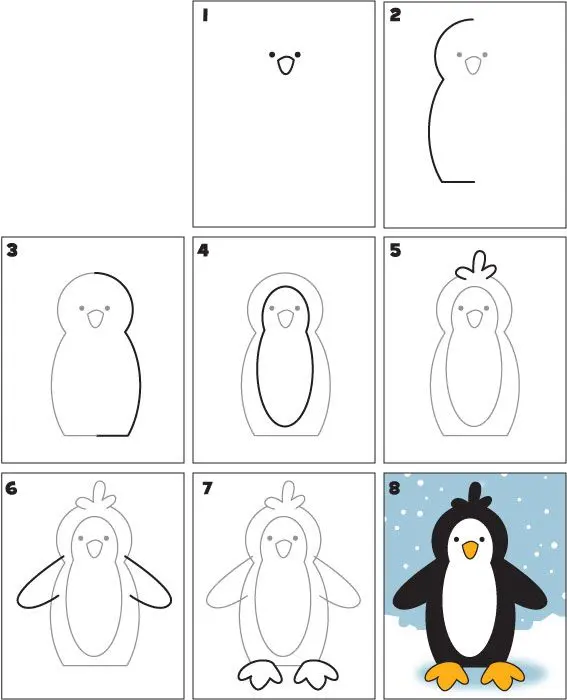
3. An easy representation of drawing an aeroplane.
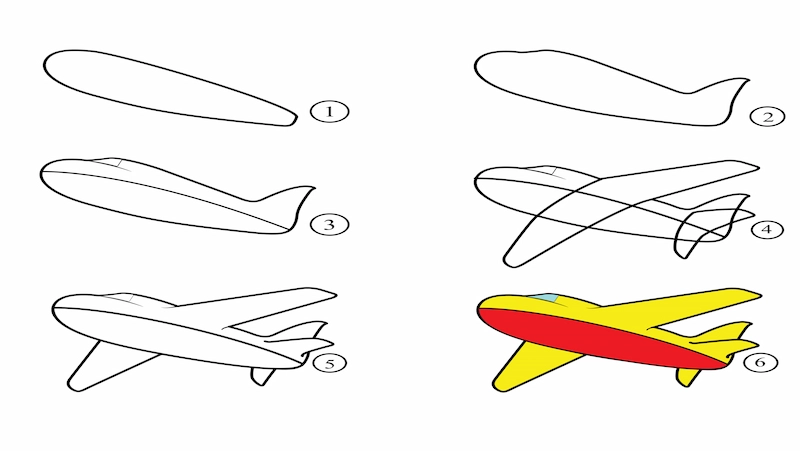
4. An easy representation of drawing an elephant.
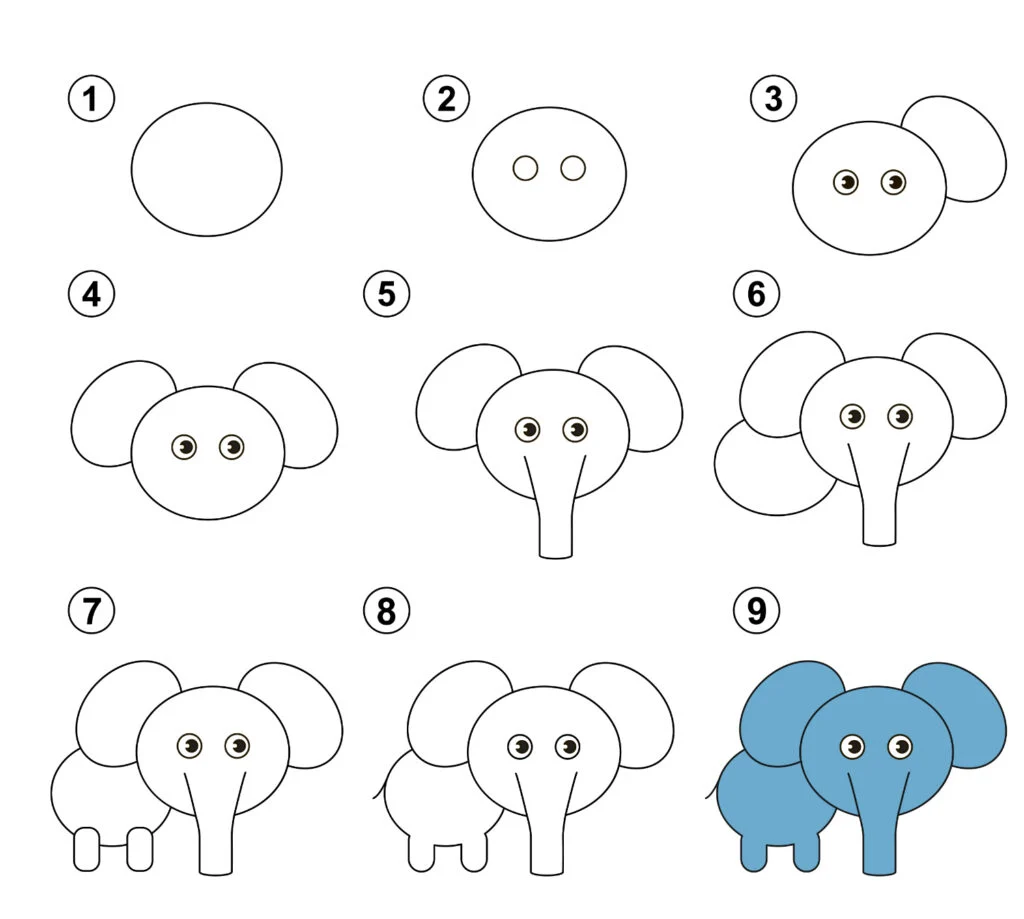
5. An easy representation of drawing a dog.

Encouraging Creativity Through Drawing
Drawing is a great way for kids to express themselves creatively. It can help them to develop their imagination, problem-solving skills, and fine motor skills. It can also be a lot of fun!
Here are a few tips and activities to help you encourage creativity in your child’s drawing sessions:
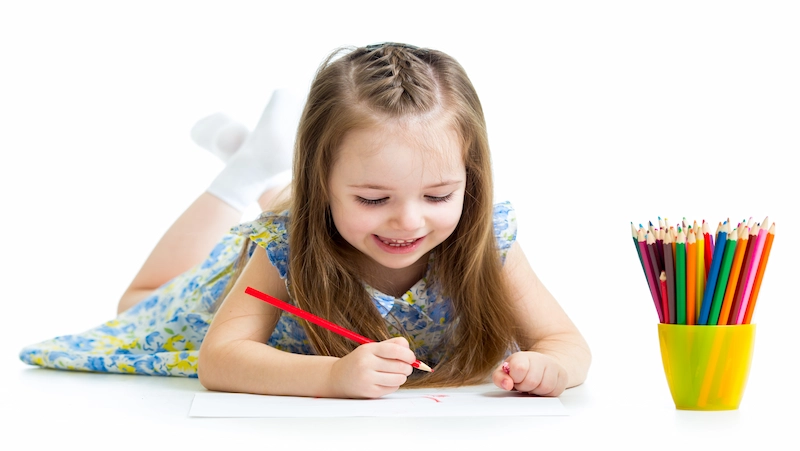
- Provide a variety of materials. Kids need a variety of materials to work with in order to be creative. Offer them different types of paper, pencils, crayons, markers, paints, and other art supplies. You can also let them experiment with different textures, such as sand, glitter, or fabric.
- Set a relaxed atmosphere. Kids need to feel relaxed and comfortable in order to be creative. Create a calm and inviting atmosphere for your art for kids‘ sessions. Turn off the TV, dim the lights, and put on some relaxing music.
- Don’t be too critical. It’s important to let kids experiment and make mistakes without being too critical. Focus on the process of creating, rather than the end product. Praise your child’s efforts, even if their drawings aren’t perfect.
- Ask open-ended questions. Ask your child open-ended questions about their drawings. This will help them to think more creatively and to explain their ideas. For example, you might ask, “What is your drawing about?” or “What colors did you use to make this?”
- Encourage them to draw from life. Encourage your child to draw from life, such as people, animals, or objects in their environment. This will help them to develop their observation skills and to draw more realistic pictures.
- Take them to museums and art galleries. Taking your child to museums and art galleries can expose them to different types of art and can inspire their own creativity.
It’s important to allow freedom and experimentation in children’s drawing sessions. This will help them to develop their own unique style and to express their creativity in their own way. Don’t be afraid to let them try new things and to make mistakes. The most important thing is that they have fun and that they enjoy the process of creating.
Recommended Art Supplies for Kids
Art is a great way for kids to express themselves, learn new skills, and have fun. There are many different art supplies available, but not all of them are created equal. When choosing art supplies for kids, it is important to consider safety, quality, and affordability.
Here are some of the essential art supplies for children’s drawing activities:
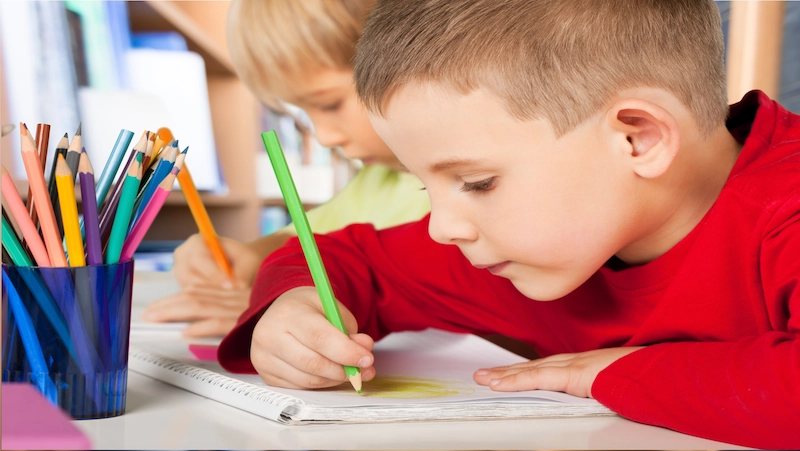
- Crayons: Crayons are a classic art supply that is perfect for kids of all ages. They are non-toxic and easy to use, even for little hands. Crayons come in a variety of colors, so kids can let their creativity run wild.
- Markers: Markers are another great option for kids. They come in a variety of colors and tip sizes, so kids can create a variety of effects. Markers are also non-toxic, but it is important to supervise young children when they are using them.
- Colored pencils: Colored pencils are a great way for kids to create detailed drawings. They come in a variety of colors and shades, so kids can create realistic and imaginative artwork. Colored pencils are also non-toxic, but they can be a bit messy.
- Paint: Paint is a fun and expressive art medium that is perfect for kids. There are many different types of paint available, including watercolors, acrylics, and oil paints. Watercolors are a good choice for young children because they are easy to clean up. Acrylics and oil paints are more durable, but they can be messier.
- Paper: Paper is an essential art supply that comes in a variety of sizes and colors. It is important to choose paper that is appropriate for the type of art that kids will be creating. For example, watercolor paper is best for watercolor painting, while construction paper is good for collages.
Art is a great way for kids to express themselves, learn new skills, and have fun. There are many different art supplies available, but not all of them are created equal. When choosing art supplies for kids, it is important to consider safety, quality, and affordability.
Here are some of the essential art supplies for children’s drawing activities:
- Crayons: Crayons are a classic art supply that is perfect for kids of all ages. They are non-toxic and easy to use, even for little hands. Crayons come in a variety of colors, so kids can let their creativity run wild.
- Markers: Markers are another great option for kids. They come in a variety of colors and tip sizes, so kids can create a variety of effects. Markers are also non-toxic, but it is important to supervise young children when they are using them.
- Colored pencils: Colored pencils are a great way for kids to create detailed drawings. They come in a variety of colors and shades, so kids can create realistic and imaginative artwork. Colored pencils are also non-toxic, but they can be a bit messy.
- Paint: Paint is a fun and expressive art medium that is perfect for kids. There are many different types of paint available, including watercolors, acrylics, and oil paints. Watercolors are a good choice for young children because they are easy to clean up. Acrylics and oil paints are more durable, but they can be messier.
- Paper: Paper is an essential art supply that comes in a variety of sizes and colors. It is important to choose paper that is appropriate for the type of art that kids will be creating. For example, watercolor paper is best for watercolor painting, while construction paper is good for collages.
In addition to these essential supplies, there are many other art supplies that can be fun for kids. These include:
- Scissors: Scissors are a great way for kids to cut out shapes and create collages. It is important to choose child-safe scissors with blunt tips.
- Glue: Glue is a necessary tool for many art projects for kids. It is important to choose a glue that is easy to use and dries clear.
- Adhesives: There are many different types of adhesives available, such as tape, glue sticks, and hot glue. Each type of adhesive has its own advantages and disadvantages. For example, tape is easy to use, but it can be messy. Glue sticks are less messy than tape, but they can be more difficult to control. Hot glue is very strong, but it can be dangerous if it is not used properly.
- Brushes: Brushes are a great way for kids to apply paint. There are many different types of brushes available, each with its own purpose. For example, flat brushes are good for applying paint to large areas, while round brushes are good for creating details.
- Easels: Easels are a great way for kids to create art at a comfortable height. They come in a variety of sizes and styles, so you can choose one that is right for your child.
When choosing art supplies for kids, it is important to consider their age and interests. Young children may be more interested in simple, non-toxic supplies, such as crayons and markers. Older children may be interested in more challenging supplies, such as paint and brushes.
It is also important to consider the amount of space you have available. If you have limited space, you may want to choose supplies that are easy to store, such as crayons and markers.
No matter what type of art supplies you choose, it is important to encourage your child to be creative and have fun. Art is a great way for kids to express themselves and learn new skills.
Art Projects and Crafts
Art projects and crafts are a great way to express your creativity, explore new mediums, and have fun. There are endless possibilities when it comes to art projects, so you’re sure to find something that interests you. Whether you’re a beginner or a seasoned pro, there’s something for everyone.
Here are a few additional art projects and crafts related to drawing:
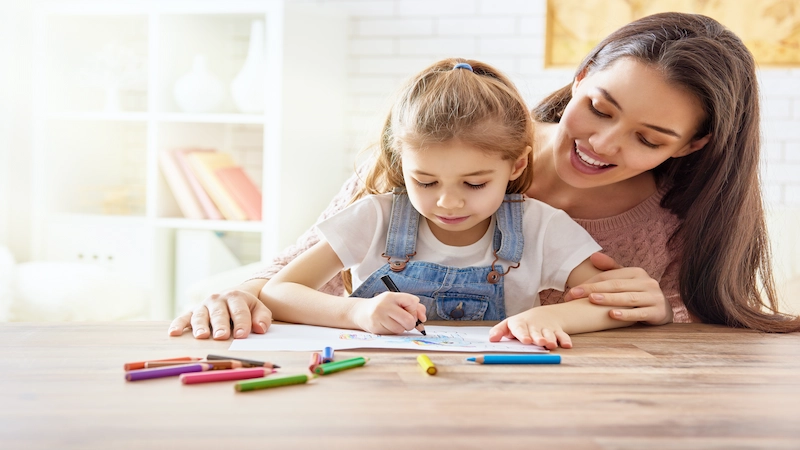
- Collages: Collages are a great way to combine different materials and create a unique piece of art. You can use anything from magazine clippings to fabric scraps to create your collage.
- Monoprints: Monoprints are a type of printmaking that uses a single impression to create an image. This is a great way to experiment with different techniques and materials.
- Pencil drawings: Pencil drawings are a classic form of art that can be used to create realistic or abstract images. This is a great way to improve your drawing skills and express your creativity.
- Watercolor paintings: Watercolor paintings are a beautiful and versatile medium. You can use watercolors to create realistic or abstract paintings, and they’re also a great way to add color to your drawings.
- Acrylic paintings: Acrylic paintings are another versatile medium that can be used to create a variety of effects. They’re also a great choice for beginners, as they’re easy to work with and don’t require as much drying time as watercolors.
These are just a few ideas to get you started. With a little creativity, you can come up with endless possibilities when it comes to art projects and crafts. So get out there and start creating!
BrightChamps offers robotics projects for kids that unleash their creativity, enabling them to design, build, and program robots in a supportive and exciting learning environment. Join our program to inspire your child’s imagination and foster a passion for robotics!
Here are some additional ideas to cater to different interests and skill levels:
- For beginners: If you’re new to art projects, start with something simple, like a collage or a pencil drawing. These are great ways to learn the basics of art and get your creative juices flowing.
- For intermediate artists: If you’re an intermediate artist, you can try something more challenging, like a monoprint or a watercolor painting. These projects will help you improve your skills and techniques.
- For advanced artists: If you’re an advanced artist, you can try something experimental, like an acrylic painting or a mixed media piece. These projects will allow you to push your boundaries and explore new ideas.
No matter what your skill level, there’s an art project or craft out there for you. So get creative and have fun!
Conclusion
In conclusion, engaging kids in fun and creative drawing activities not only nurtures their imagination but also develops essential skills and boosts their overall cognitive development. From experimenting with different art materials to exploring various themes and techniques, there is an endless array of drawing ideas to spark their creativity.
Encouraging children to express themselves through art allows them to unleash their inner artist, build confidence, and enjoy the process of creating something unique. So, let’s provide them with the tools, inspiration, and support they need, and watch as their artistic journey unfolds with joy and endless possibilities.
To get your hands on more such educational and free resources on coding for kids, robotics courses for kids, game development, etc., do check out the Brightchamps Page now! To learn robotics camps for kids follow us.
Frequently Asked Question
Easy drawing ideas for kids include drawing animals, flowers, simple shapes like circles and squares, and their favorite cartoon characters.
Encourage your child’s creativity by providing a variety of drawing materials, praising their efforts, displaying their artwork, and allowing them to explore different subjects and styles.
Yes, there are step-by-step drawing tutorials available online and in books specifically designed for beginners. These tutorials break down complex drawings into simpler steps, making it easier to learn.
Suitable art supplies for kids’ drawing activities include colored pencils, crayons, washable markers, sketchbooks or plain paper, erasers, and non-toxic paints.
Drawing benefits a child’s development by enhancing their fine motor skills, hand-eye coordination, concentration, imagination, self-expression, problem-solving abilities, and visual-spatial awareness. It also promotes confidence and emotional well-being.

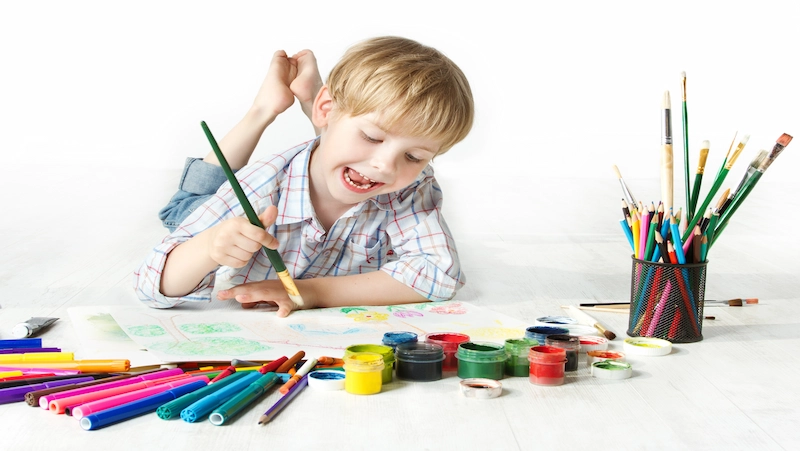
 We are an army of educators and passionate learners from BrightChamps family, committed to providing free learning resources to kids, parents & students.
We are an army of educators and passionate learners from BrightChamps family, committed to providing free learning resources to kids, parents & students.








